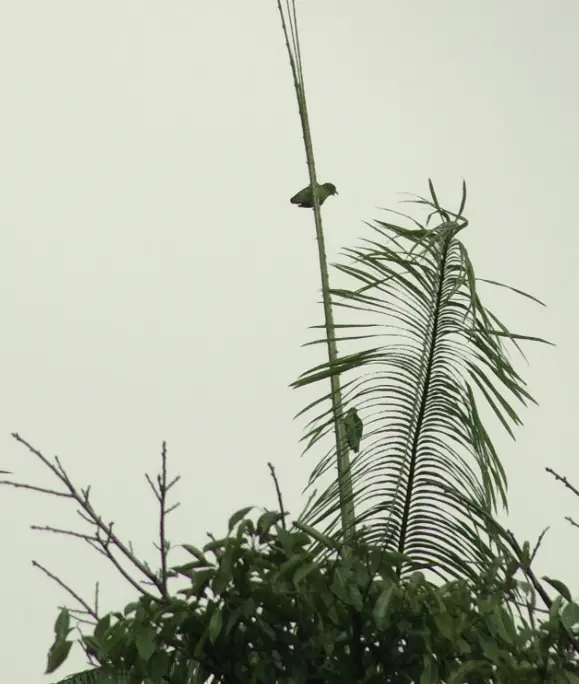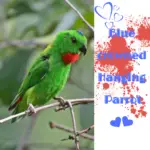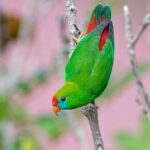
Camiguin Hanging-Parrot c. 14 cm. The plumage is yellowish-green, with red forehead and crown, red rump, greater and some median upper wing-coverts with diffusely duskier centers, primaries dusky with much green on the outer web, secondaries, and tertials similar but mostly green; rectrices green with some light blue on tips and along the central area;
light blue face and blue underside of tail; a light blue mutant form has green replaced by pale blue, and other colors paler; iris dark greyish; bill orange to orange-red; legs yellowish-horn to fleshy-orange. Sexes alike.
Distinguished from congeners by long tail and wing, more strongly blue-washed face, also by lack of sexual dimorphism. The juvenile has little or no red on top of the head and reduced blue on the cheek.
Considered to be closely related to L. philippensis. Treatment as a full species is not universally accepted; molecular-genetic analysis is required. Monotypic.

Subspecies
Monotypic.
Distribution
Camiguin Sur, off N coast of Mindanao, in S Philippines.
Habitat
Canopy in upland forest.
Movement
Probably sedentary.
Diet and Foraging
Camiguin hanging-parrot is Said to feed on nectar, seeds, particularly of wild bananas (Musa), also soft fruit, berries, and blossoms. Seen mostly singly, in pairs, or in small groups.
Camiguin hanging parrot
SOURCE: greenpalaka
Sounds and Vocal Behavior
Most often heard is a high-pitched, quickly repeated “tziit-tziit-tziit”.
Breeding
Season probably Sept–Nov. Camiguin Hanging-Parrot Nest placed in the hole in dead tree-fern. No other information.
Kulasisi, kusi, small green parrot, or camiguin hanging parrot,
SOURCE: Og Berenguela
Conservation Status





















